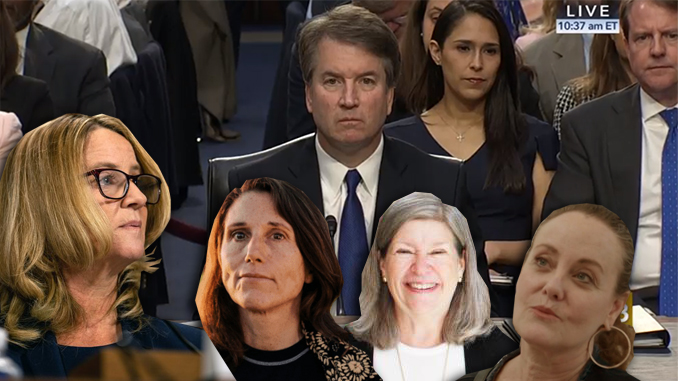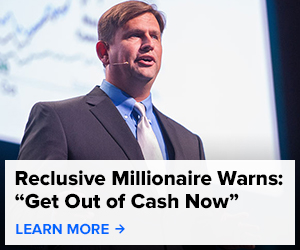
As the dust settles on the appointment of Supreme Court Justice Brett Kavanaugh, evidence suggests those who accused him of sexual impropriety were politically motivated.
By Donald Jeffries
In early November, one of Brett Kavanaugh’s accusers, Judy Munro-Leighton, admitted to the Senate Judiciary Committee that she had lied about her allegations of being raped by a teen-aged Kavanaugh in the backseat of a car. Ms. Munro-Leighton cavalierly shrugged it off as a “tactic” to stop the judge from being confirmed to the Supreme Court.
Sen. Charles Grassley (R-Iowa) has been in the forefront of those critically evaluating Kavanaugh’s slew of accusers. Grassley pointed out Ms. Munro-Leighton’s history of leftist activism and claimed that she’d stolen the backseat story from a different “Jane Doe” report.
Grassley’s team was able to reach Ms. Munro-Leighton in early November, when she told them she was not this “Jane Doe,” but had decided to become involved “as a way to grab attention.”
Grassley has also called for the Department of Justice to investigate Kavanaugh accuser Julie Swetnick and her liberal-activist lawyer Michael Avenatti. Grassley charged that they had attempted to “knowingly mislead the committee.”
During the Kavanaugh hearings, Ms. Swetnick alleged that Kavanaugh had surreptitiously given women drugs and alcohol in order to orchestrate gang rapes at parties in the early 1980s.
Avenatti’s anti-Trump rhetoric was so over-the-top that at one point he offered to fight Donald Trump Jr. for charity. Avenatti, who initially burst into the limelight as the attorney for porn star Stormy Daniels, battled the president constantly on Twitter, calling Trump “a disgrace” and “an embarrassment” and labeling him “a habitual liar.”
Ms. Swetnick, in fact, was revealed to have been involved in at least six lawsuits over the last 25 years, according to legal documents seen by press outlets such as “Business Insider.” The suits involved multiple issues such as her misrepresenting a degree from Johns Hopkins University that she didn’t have, suing the Washington Metro Transit Authority over a fall that she alleged had cost her a lucrative modeling job, and engaging herself in “unwanted sexual innuendo” at a former workplace.
Another Kavanaugh accuser, Deborah Ramirez, claimed that the future judge had exposed himself to her 35 years earlier at a party. She couldn’t remember just who exposed himself until Kavanaugh’s nomination to the Supreme Court, however, when a conversation with her lawyer, who was a Democratic Party politician, refreshed her memory.
The New Yorker inadvertently did some good work in exposing Ms. Ramirez, whom it described as an “activist Democrat.” Ms. Ramirez, even after her belated and dubious identification of Kavanaugh, continued to admit to “significant gaps in her memories of the evening.” She also acknowledged being so drunk at the party that she was “on the floor, foggy, and slurring her words.”
None of the witnesses named by Ms. Ramirez were able to corroborate her story. The New York Times, clearly desirous of damaging Kavanaugh’s chances, reported that it had investigated Ms. Ramirez thoroughly but grudgingly conceded she’d been admitting to classmates that she couldn’t be certain if it had indeed been Kavanaugh. They eventually were unable to verify her claims.
For what it’s worth, Kavanaugh’s primary accuser, Christine Blasey Ford, had a slew of problems with her account, which were rarely touched upon by a fawning mainstream media or adoring throng of celebrities. Ms. Ford couldn’t recall the exact date of an incident where the teenage Kavanaugh attempted to remove her clothing. Her description of a party “one summer in the early 1980s” was ludicrously vague and made it impossible for Kavanaugh to establish an alibi. Further, Ms. Ford couldn’t recall the specific house or even the street it was located on where the alleged assault occurred. Finally, Ms. Ford didn’t tell anyone at the time, not even her best friend.
 As was the case with Ms. Ramirez, four different people Ms. Ford claimed had attended the party denied being there. One of them, Leland Ingham Keyser, according to a Sept. 25 story in the New York Post, called Ms. Ford “a lifelong fraud.” Keyser was one of two people Ms. Ford cited in her original letter to Sen. Dianne Feinstein (D-Calif.), who she claimed she had spoken to immediately after the assault. Even Ms. Ford’s parents and two siblings failed to show up during her much-ballyhooed congressional testimony and didn’t sign a letter of support from other relatives, which was released to the public.
As was the case with Ms. Ramirez, four different people Ms. Ford claimed had attended the party denied being there. One of them, Leland Ingham Keyser, according to a Sept. 25 story in the New York Post, called Ms. Ford “a lifelong fraud.” Keyser was one of two people Ms. Ford cited in her original letter to Sen. Dianne Feinstein (D-Calif.), who she claimed she had spoken to immediately after the assault. Even Ms. Ford’s parents and two siblings failed to show up during her much-ballyhooed congressional testimony and didn’t sign a letter of support from other relatives, which was released to the public.
Ms. Ford, like others involved in the anti-Kavanaugh crusade, was a known Democratic Party supporter, who had marched against Trump. She had also signed a letter protesting the separation of immigrant children from their parents at the border.
On Oct. 6, Kavanaugh was approved by a narrow 50-48 margin in the Senate, reflecting the severe division in the country.
Donald Jeffries is a highly respected author and researcher whose work on the JFK, RFK and MLK assassinations and other high crimes of the Deep State has been read by millions of people across the world. Jeffries is also the author of two books currently being sold by the AFP Online Store. They are Hidden History: An Exposé of Modern Crimes, Conspiracies, and Cover-Ups ($23) and Survival of the Richest—How the Disparity of Wealth Created the Greatest Conspiracy of All ($25).




